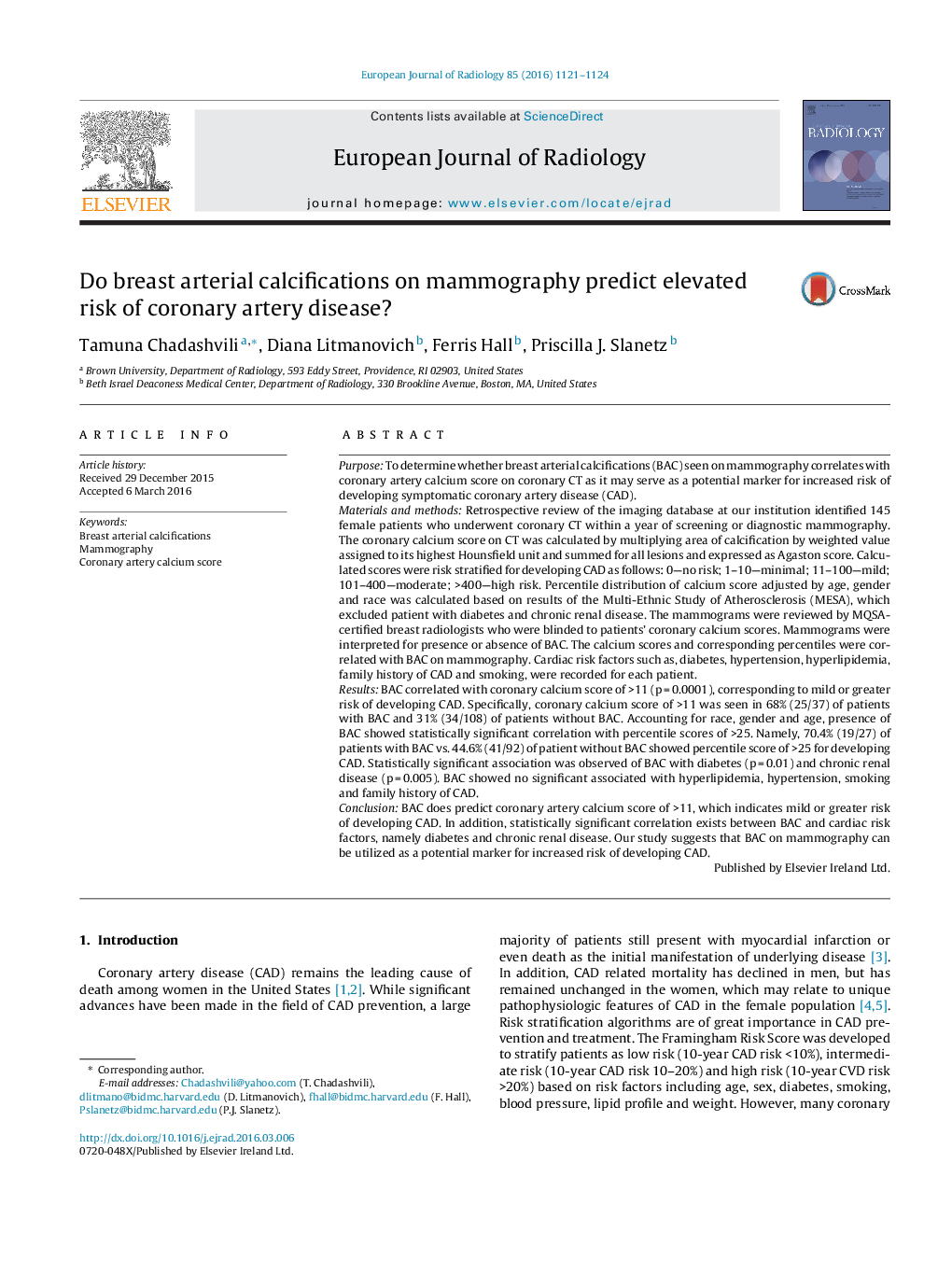| Article ID | Journal | Published Year | Pages | File Type |
|---|---|---|---|---|
| 4224826 | European Journal of Radiology | 2016 | 4 Pages |
PurposeTo determine whether breast arterial calcifications (BAC) seen on mammography correlates with coronary artery calcium score on coronary CT as it may serve as a potential marker for increased risk of developing symptomatic coronary artery disease (CAD).Materials and methodsRetrospective review of the imaging database at our institution identified 145 female patients who underwent coronary CT within a year of screening or diagnostic mammography. The coronary calcium score on CT was calculated by multiplying area of calcification by weighted value assigned to its highest Hounsfield unit and summed for all lesions and expressed as Agaston score. Calculated scores were risk stratified for developing CAD as follows: 0—no risk; 1–10—minimal; 11–100—mild; 101–400—moderate; >400—high risk. Percentile distribution of calcium score adjusted by age, gender and race was calculated based on results of the Multi-Ethnic Study of Atherosclerosis (MESA), which excluded patient with diabetes and chronic renal disease. The mammograms were reviewed by MQSA-certified breast radiologists who were blinded to patients’ coronary calcium scores. Mammograms were interpreted for presence or absence of BAC. The calcium scores and corresponding percentiles were correlated with BAC on mammography. Cardiac risk factors such as, diabetes, hypertension, hyperlipidemia, family history of CAD and smoking, were recorded for each patient.ResultsBAC correlated with coronary calcium score of >11 (p = 0.0001), corresponding to mild or greater risk of developing CAD. Specifically, coronary calcium score of >11 was seen in 68% (25/37) of patients with BAC and 31% (34/108) of patients without BAC. Accounting for race, gender and age, presence of BAC showed statistically significant correlation with percentile scores of >25. Namely, 70.4% (19/27) of patients with BAC vs. 44.6% (41/92) of patient without BAC showed percentile score of >25 for developing CAD. Statistically significant association was observed of BAC with diabetes (p = 0.01) and chronic renal disease (p = 0.005). BAC showed no significant associated with hyperlipidemia, hypertension, smoking and family history of CAD.ConclusionBAC does predict coronary artery calcium score of >11, which indicates mild or greater risk of developing CAD. In addition, statistically significant correlation exists between BAC and cardiac risk factors, namely diabetes and chronic renal disease. Our study suggests that BAC on mammography can be utilized as a potential marker for increased risk of developing CAD.
